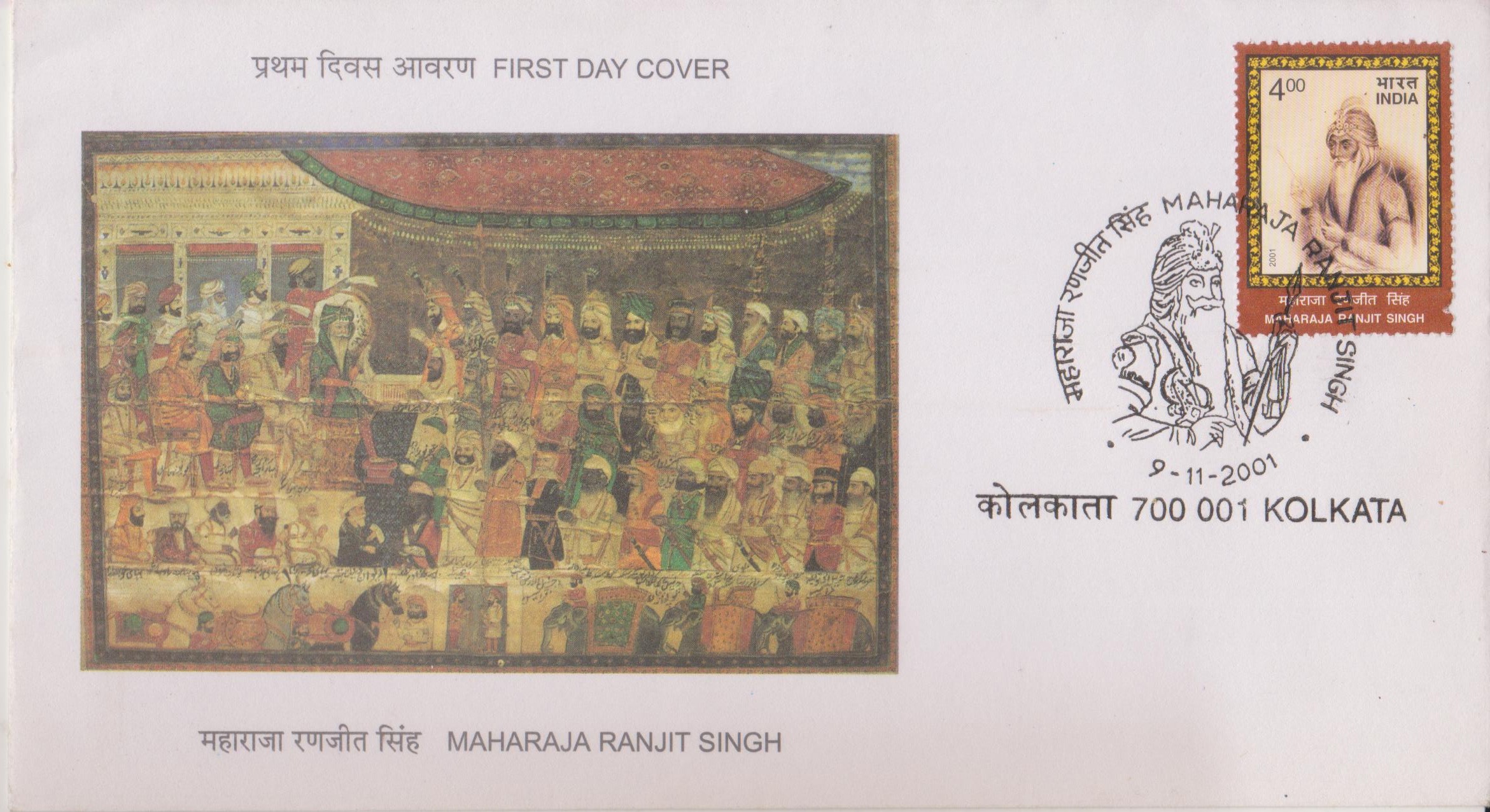
Maharaja Ranjit Singh 2001
A commemorative postage stamp on Bicentenary of Coronation as Maharajah of Punjab, Sher-e-Punjab: Ranjit Singh, leader of the Sikh Empire (1801-39) & founder of Secularism in India :
 Issued by India
Issued by India
Issued on Nov 9, 2001
Issued for : The reign of Maharaja Ranjit Singh was the harbinger of great things to come – the birth of a modern nation transcending communal distinctions. The Department of Posts deems it a privilege to issue a commemorative postage stamp in the memory of this great hero of Indian History.
Design : The First Day Cover depicts a miniature painting by an unknown artist of nineteenth century showing the Court of Maharaja Ranjit Singh as perceived by the artist.
Credits :
Stamp, FDC & Cancellation : Alka Sharma, Based on material furnished by sponsors.
Type : First Day Cover
Colour : Four Colour
Denomination : 400 Paise
Overall size : 2.90 x 3.91 cms.
Printing size : 2.90 x 3.91 cms.
Perforation : 13 x 13
Paper : Imported un w/m stamp paper
Stamps Printed : 0.4 million
Number per issue sheet : 40
Printing Process : Photo Offset
Printer : Eagle Press Pvt. Ltd.
Name : Buddh Singh
Born on Nov 13, 1780 at Badrukhan village, Sangrur district, Punjab, India
Died on Jun 27, 1839 at Lahore, Punjab, Sikh Empire [now in Pakistan]
About :
- Born in 1780 AD, Maharaja Ranjit Singh has been rightly called the founder and architect of secularism in India. His father, Mohan Singh, a chieftain, died when Ranjit Singh was hardly eleven years old.
- He had to face a herculean task from the very beginning and to take the sword at a very young age. The country was torn by internal dissensions and jealousy. Hostile eyes were looking greedily at Punjab and it was left to Ranjit Singh to protect it from its many enemies. By sheer dint of courage, sagacity and wisdom, he rallied a disunited people, roused them to a supreme effort and made them masters of the land. Himself illiterate, educated by the milieu in the art of practical warfare, he carved out a great kingdom in northern India.
- Maharaja Ranjit Singh raised a most powerful fighting force and, for the first time in a thousand years of Indian history, brought the traditional invaders of India to their knees. In the history of the world it would be hard to find another ruler who never took life in cold blood yet built up such a large empire. His reign was free from any acts of cruelty and oppression. His success was mainly due to his ability to arouse the nascent sense of nationalism amongst his people and make them conscious that the fact of belonging to one’s country was the most important. Considerations of caste or creed never weighed with him and he meted out justice impartially to all his subjects, regardless of their religious affiliations. Due recognition was given to ability and loyalty and thus he was assured of the assistance of a band of highly capable and devoted lieutenants. Maharaja Ranjit Singh never adopted the theory of the Divine Right of Kings, never gave himself any high-sounding titles and never claimed any supernatural powers. He picked out men like jewels and cherished them.
- Maharaja Ranjit Singh passed away at Lahore in June, 1839. He has left an indelible mark on the pages of history. He was a great soldier and statesman – one of the greatest that India has produced in her long history.
- Text : Based on material furnished by the sponsors.



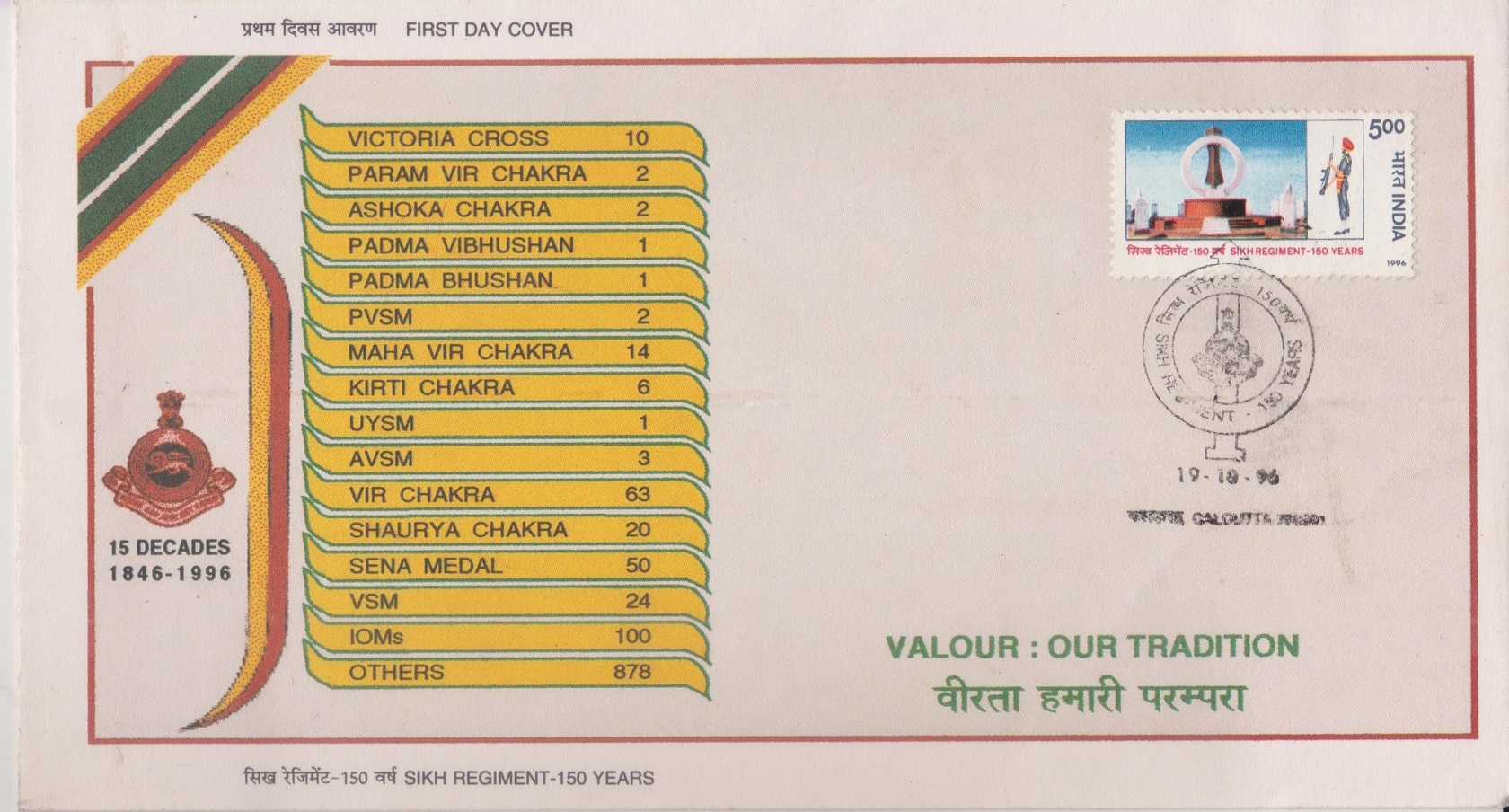
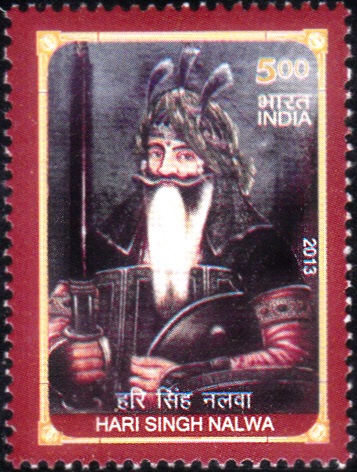

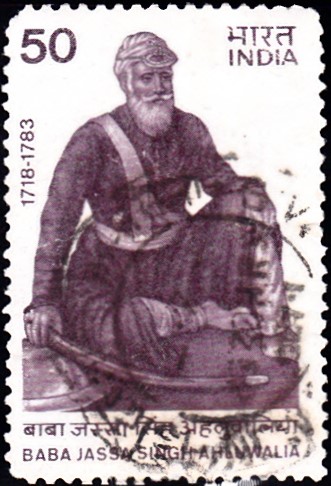
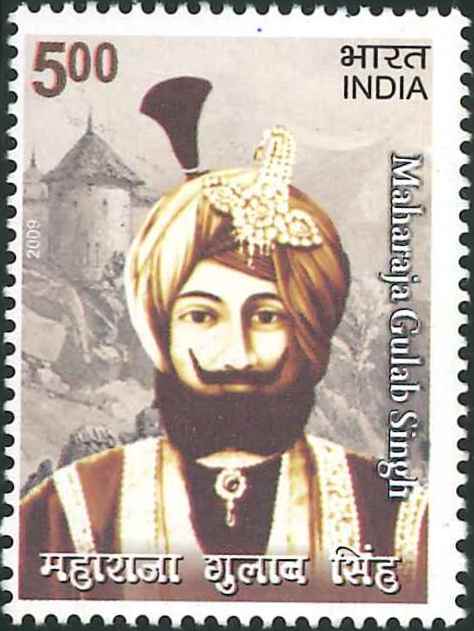
[…] 16th century by the grandson of Guru Nanak, Baba Dharam Chand. The current Gurudwara was built by Ranjit Singh in the 19th century and includes a domed sanctum with an attached rectangular pavilion, surrounded […]
[…] Ranjha’ by Waris Shah. Its present form and popularity goes back to the 15th century, during Maharaja Ranjit Singh’s reign. Phulkari also means headscarf and it comes from the 19th century tradition of carrying […]